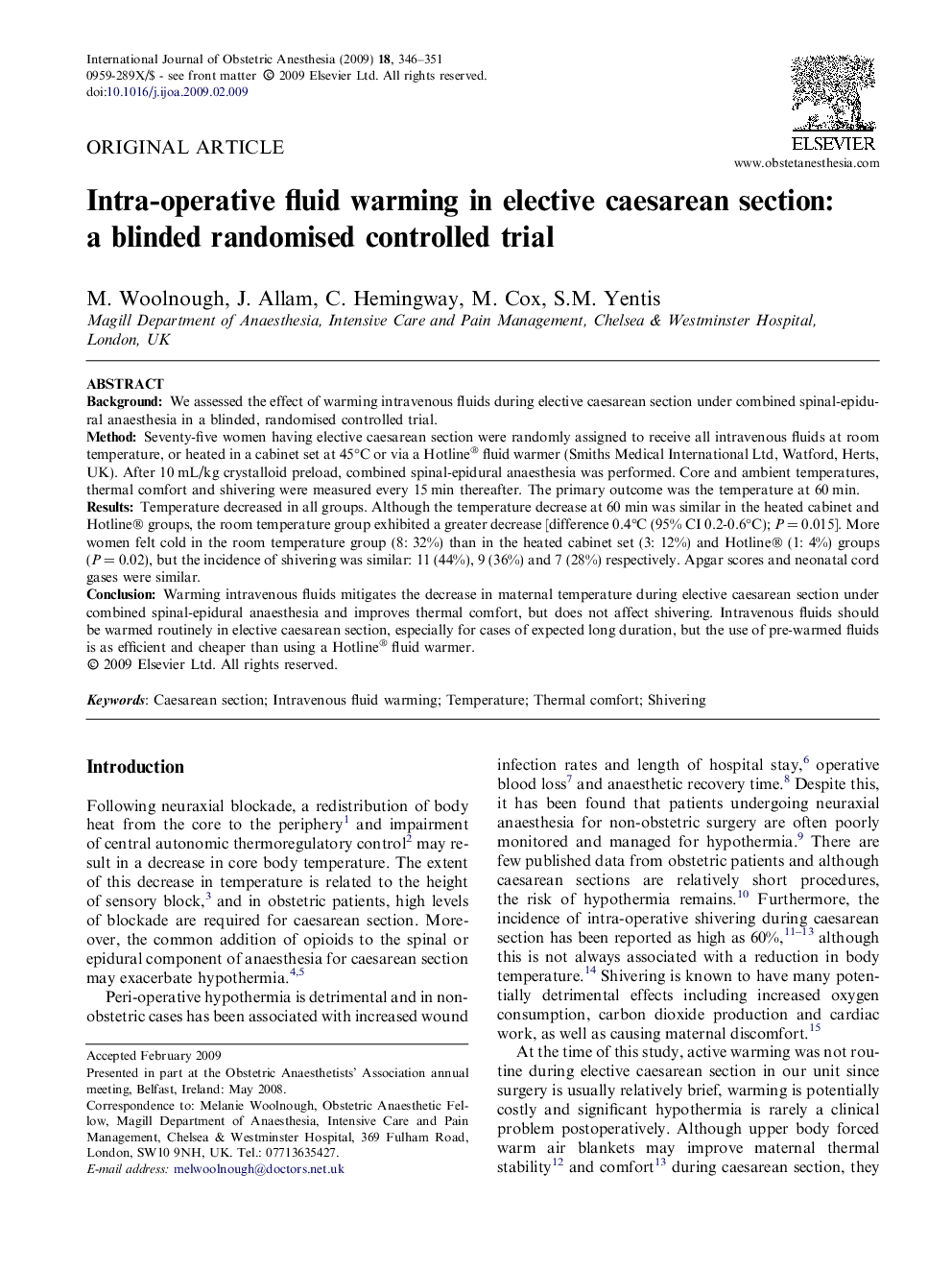| Article ID | Journal | Published Year | Pages | File Type |
|---|---|---|---|---|
| 2757952 | International Journal of Obstetric Anesthesia | 2009 | 6 Pages |
BackgroundWe assessed the effect of warming intravenous fluids during elective caesarean section under combined spinal-epidural anaesthesia in a blinded, randomised controlled trial.MethodSeventy-five women having elective caesarean section were randomly assigned to receive all intravenous fluids at room temperature, or heated in a cabinet set at 45°C or via a Hotline® fluid warmer (Smiths Medical International Ltd, Watford, Herts, UK). After 10 mL/kg crystalloid preload, combined spinal-epidural anaesthesia was performed. Core and ambient temperatures, thermal comfort and shivering were measured every 15 min thereafter. The primary outcome was the temperature at 60 min.ResultsTemperature decreased in all groups. Although the temperature decrease at 60 min was similar in the heated cabinet and Hotline® groups, the room temperature group exhibited a greater decrease [difference 0.4°C (95% CI 0.2-0.6°C); P = 0.015]. More women felt cold in the room temperature group (8: 32%) than in the heated cabinet set (3: 12%) and Hotline® (1: 4%) groups (P = 0.02), but the incidence of shivering was similar: 11 (44%), 9 (36%) and 7 (28%) respectively. Apgar scores and neonatal cord gases were similar.ConclusionWarming intravenous fluids mitigates the decrease in maternal temperature during elective caesarean section under combined spinal-epidural anaesthesia and improves thermal comfort, but does not affect shivering. Intravenous fluids should be warmed routinely in elective caesarean section, especially for cases of expected long duration, but the use of pre-warmed fluids is as efficient and cheaper than using a Hotline® fluid warmer.
